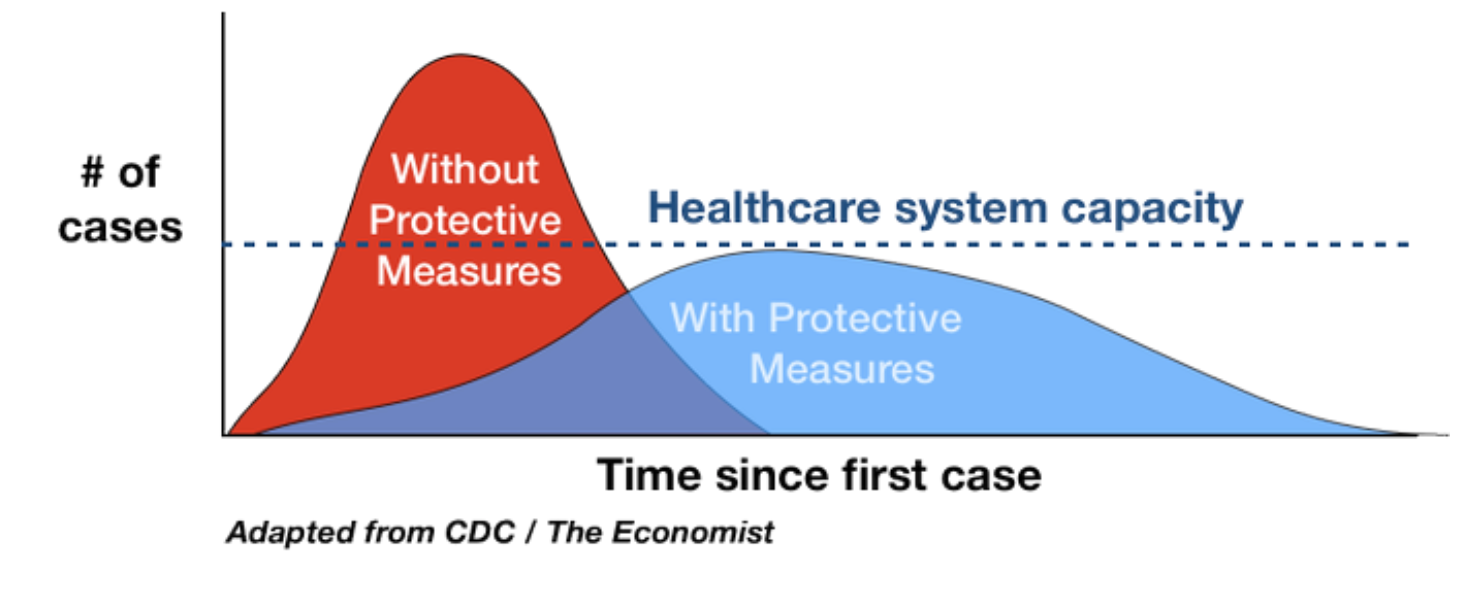Health Glossary
Georgia Barlow, B.A. MPH Candidate Tulane University- Environmental Disaster Management
COVID- 10 (Coronavirus): COVID-19 (also called coronavirus) is a new virus that was first seen in humans in 2019. This new virus has symptoms that include runny nose, sore throat, coughing, fever, and difficulty breathing. Because this is a new disease, we are still learning how it spreads and the full severity of the illness it causes, but at the moment the most common way it is spreading is from person to person.
The Curve “Flattening the Curve”: You may have seen curves like this before— as you go from left to right this represents time passing, and the height of the curve shows how many people have the virus at that time. If there is nothing done to slow the spread of the virus, we expect more people to have the disease at the same time. If we are able to slow the spread of the virus through hand washing, and quarantine measures we hope to limit the number of people with the virus at one time, making it easier to treat the people with the virus.

Pandemic/ Epidemic: A pandemic is a disease that has spread across many countries and affects a large number of people and is more than what’s expected in areas. An epidemic is a rise in the number of cases of a disease beyond what is normally expected in a small area.
Quarantine: Staying in one place to stop the spread of a disease by limiting the number of people you are exposed to.
Social Distancing: Reducing the number of people that you come into contact with by limiting the number of places that you go, and limiting any physical touch that can spread germs.
Drive-Thru Testing: A new way of testing people quickly for a disease without filling Emergency Rooms and doctors’ offices. Temperatures and symptoms are evaluated while patients are still in their cars to speed up the process and reduce the spread of the virus.
Community spread: When we see people with the disease who have not knowingly been in contact with anyone else with the disease. This means that they got the disease from an unknown source–it could have been picking something up at a store that an infected person had also touched. Quarantining and social distancing can reduce community spread and result in fewer people getting sick.
Immunocompromised: When someone has less ability to fight infections and other diseases. This is usually caused by certain diseases or conditions, such as AIDS, cancer, and diabetes, and it makes people more likely to become sick from a new disease.

